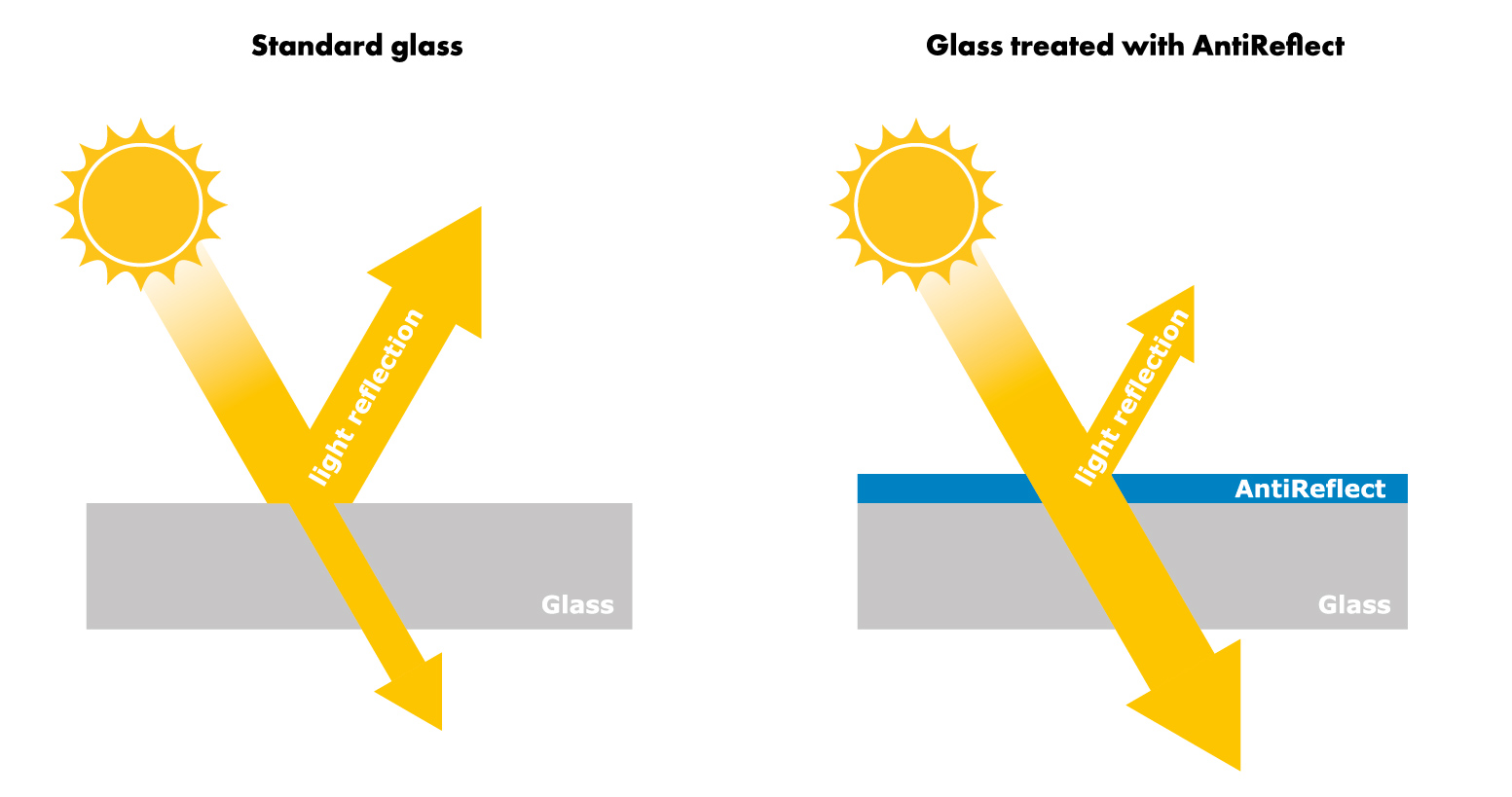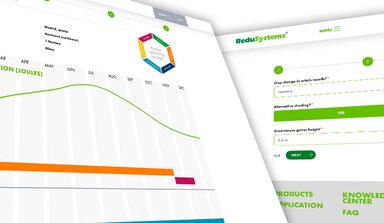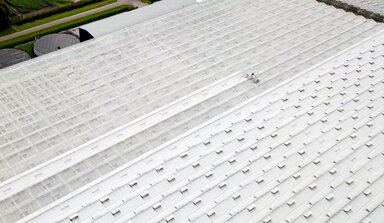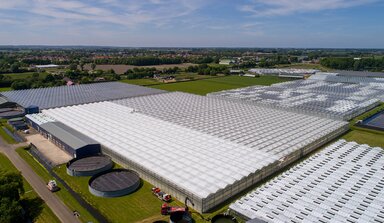Investment in AntiReflect produces considerably greater yield
Durability tests carried out in actual practice show that AntiReflect lasts at least 2 years. Throughout that time, the extra light in the greenhouse results in considerably greater yields. This is the conclusion of the calculations made by Wageningen University & Research.

The initial experiences of growers with AntiReflect are very positive. Growers are reporting additional yields that are several percent higher than expectations. They are able to estimate this because they compared a treated greenhouse compartment with an untreated compartment. While Mardenkro guarantees a minimum increase in the incidence of light of at least 2.5%, some growers have measured increased yields of 5%.
When AntiReflect is applied to the entire greenhouse roof, it is of course very difficult to estimate the increase in yield. After all, each year is different. This is why Wageningen University & Research's internationally renowned Light Lab performed calculations under standardised conditions.
The sunlight that hits the greenhouse roof for the most part passes through the glass. This is referred to as transmission. However, a part reflects off the glass and as a result is lost to the crop. AntiReflect significantly reduces this reflection, thus increasing transmission.
The initial experiences of growers with AntiReflect are very positive. Growers are reporting additional yields that are several percent higher than expectations. They are able to estimate this because they compared a treated greenhouse compartment with an untreated compartment. While Mardenkro guarantees a minimum increase in the incidence of light of at least 2.5%, some growers have measured increased yields of 5%.
When AntiReflect is applied to the entire greenhouse roof, it is of course very difficult to estimate the increase in yield. After all, each year is different. This is why Wageningen University & Research's internationally renowned Light Lab performed calculations under standardised conditions.
The sunlight that hits the greenhouse roof for the most part passes through the glass. This is referred to as transmission. However, a part reflects off the glass and as a result is lost to the crop. AntiReflect significantly reduces this reflection, thus increasing transmission.
Converting light into production
Next, the question is how does the crop use that additional light? To answer this question, it is necessary to simulate the photosynthesis, breathing, distribution of assimilates and crop development. The researchers did this for three vegetable crops and three cut flowers using the INTKAM crop model. The usual cultivation strategies applied by Dutch market gardeners were used for this purpose.
Tomatoes grown under AntiReflect were shown to be able to produce an additional yield of 3.2%. This figure is consistent with the initial practical experiences, which were in fact slightly higher.
The calculated additional yield for bell peppers is 2.9% and for cucumbers it is no less than 5.1%.
The difference between the three fruiting vegetables is due to the distribution of assimilates. In terms of photosynthesis there is no divergence. They all perform 3% better under AntiReflect in comparison to an untreated greenhouse roof. However, cucumber is found to deliver a larger share of the sugars it produces to the fruit. This explains the striking result.
In certain situations, Mardenkro will also initiate a consultation process to get the best from the crop in a greenhouse treated with AntiReflect.
Cut Flowers
The expected additional yield for roses is 2.8%. For chrysanthemums and gerberas, this figure is 2.6% and 3.4%, respectively. These cut flowers are known as light-loving crops. That is the reason why many growers use assimilation lighting. The researchers took this into account in their calculations. This means that the additional yield is really due to the better incidence of natural light.
In case of chrysanthemums, the entire plant is harvested, which means that the distribution of the additionally produced assimilates is not as important. On the other hand, it is important for roses and gerberas. Gerberas appear to distribute the additional sugars equally across the leaves and flower stems. Roses show a rather striking picture. While roses lag in terms of increased photosynthesis in comparison to the other two, the rose specifically delivers the additional sugars to its flowers, so that the gains here are of the same order of magnitude.
Two-year Gain
Actual practice shows that the increased light transmission gain after 2 years is around 2%, while immediately after application it was on average 3%.
Wageningen University & Research's Light Lab measured the glass sheets that were treated with AntiReflect under these practical conditions. Measurements were taken for the first practical applications immediately after application, as well as after the first and second year. Glass sheets were removed from different locations in the greenhouse for this purpose.
During these 2 years ReduSystems coatings were applied to the projects and removed with ReduClean. The greenhouse roof was also brushed on several occasions. This shows that AntiReflect is perfectly able to withstand this and retains its higher light transmission.
An investment in AntiReflect therefore produces a higher yield over a period of at least two years.


